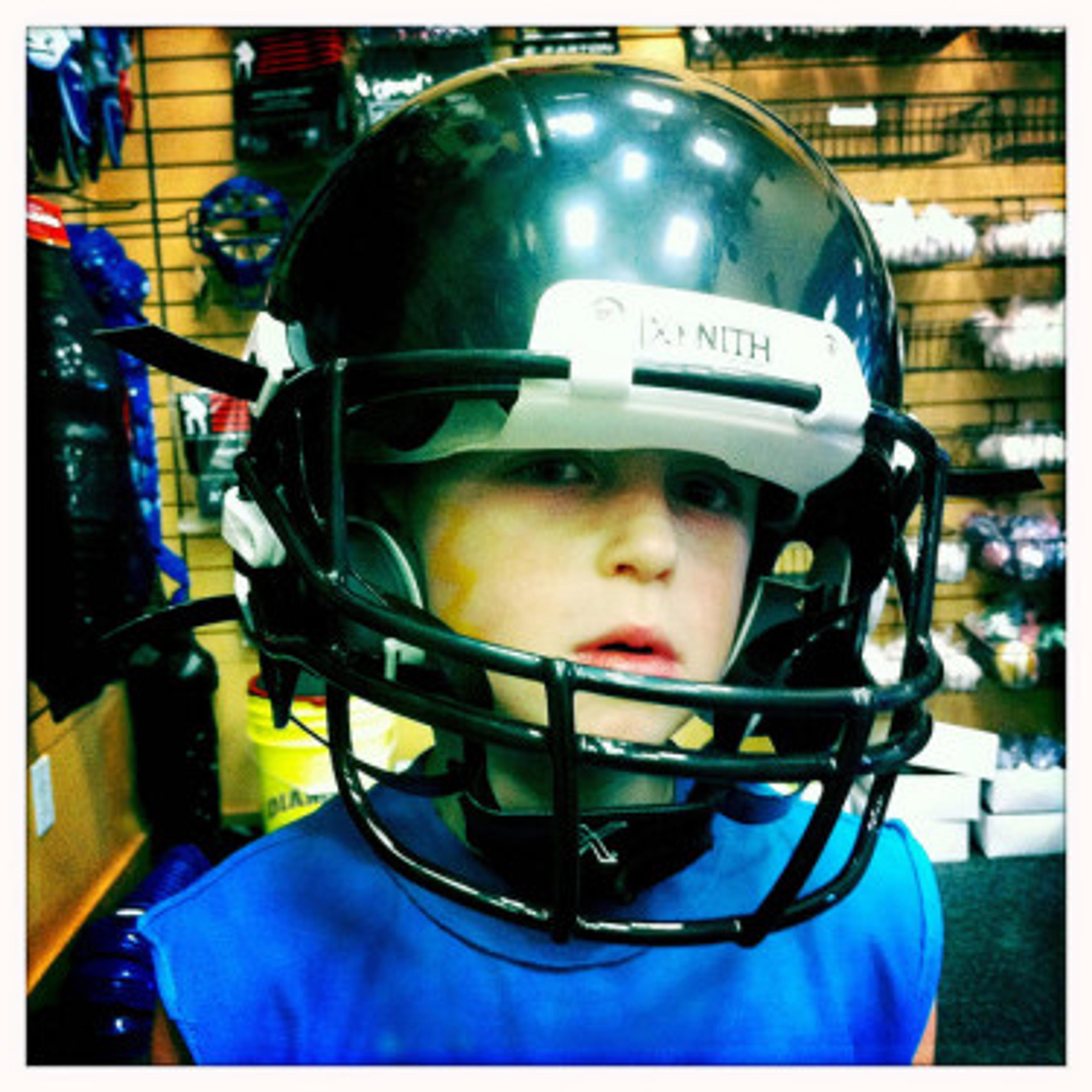The right gear to score a winning football season
| 3 min read

We’re always inspired when we watch the Wolverines and Spartans hit the field during college football season. The smart plays, quick sprints and bone-jarring hits – how do they do it? Of course, talent and years of training play a significant role in their success, but let’s not overlook the importance of appropriate safety equipment to keep players off the injured reserves.
Football’s physical nature, as well as the sheer number of people who play the sport, make it a leading cause of school sports injuries. Common football injuries include ankle sprains, pulled muscles, broken bones, torn ligaments and concussions. If you’ve signed up your child to participate in a youth football league – or enjoy playing recreational football yourself – find out what gear you need to stay healthy and injury-free.
Helmet: By now, we’ve all heard the concerns about football players and concussions. Be sure to protect your noggin with a helmet that meets the safety standards developed by the National Operating Committee on Standards for Athletic Equipment (NOCSAE). All football helmets should have a hard plastic shell and a thick layer of padding, as well as a rigid facemask made from carbonated steel. USA Football advises players to place the helmet so the front edge rests one inch above the eyebrows, and then fasten it using a chinstrap. The chinstrap should fit snugly under the chin to keep the helmet in place when players run or take a hit.
Mouth Guard: We can’t emphasize the importance of mouth guards enough! All football leagues require players to wear mouth guards, and it’s easy to see why. Did you know this small plastic device has been found to prevent more than 200,000 mouth injuries a year? The American Dental Association reports that athletes are 60 times more likely to sustain a dental injury if they don’t wear one.
Cleats: Football leagues have various rules about the types of cleats that players can wear, but USA Football says all cleats protect the mid-sole of the foot by offering more support in lateral movements. You can choose from three styles of football cleats: high-cut, mid-cut and low-cut. High-cut cleats provide the most ankle support but may offer less mobility than other styles. In comparison, mid-cut cleats supply a balance of ankle support and mobility, and low-cut cleats offer light weights and quick mobility.
Pads & Protection: Don’t assume less padding and protection will improve your game. Studies haven’t shown that players pick up speed by not wearing hip or thigh pads, according to Ron Courson, director of sports medicine at the University of Georgia. Players need to wear shoulder, waist and leg pads to absorb shock during hits and tackles, as well as to reduce the risk of hip pointers and quadriceps contusions. Male athletes should also wear an athletic cup to protect the sensitive groin area.
Do you have everything you need to be game-day ready? Don’t forget, BCBSM and BCN members get special discount and deals at retailers such as Dunham’s Sports through Healthy Blue Xtras. It’s the perfect way to win both on and off the field!
Photo credit: clappstar





